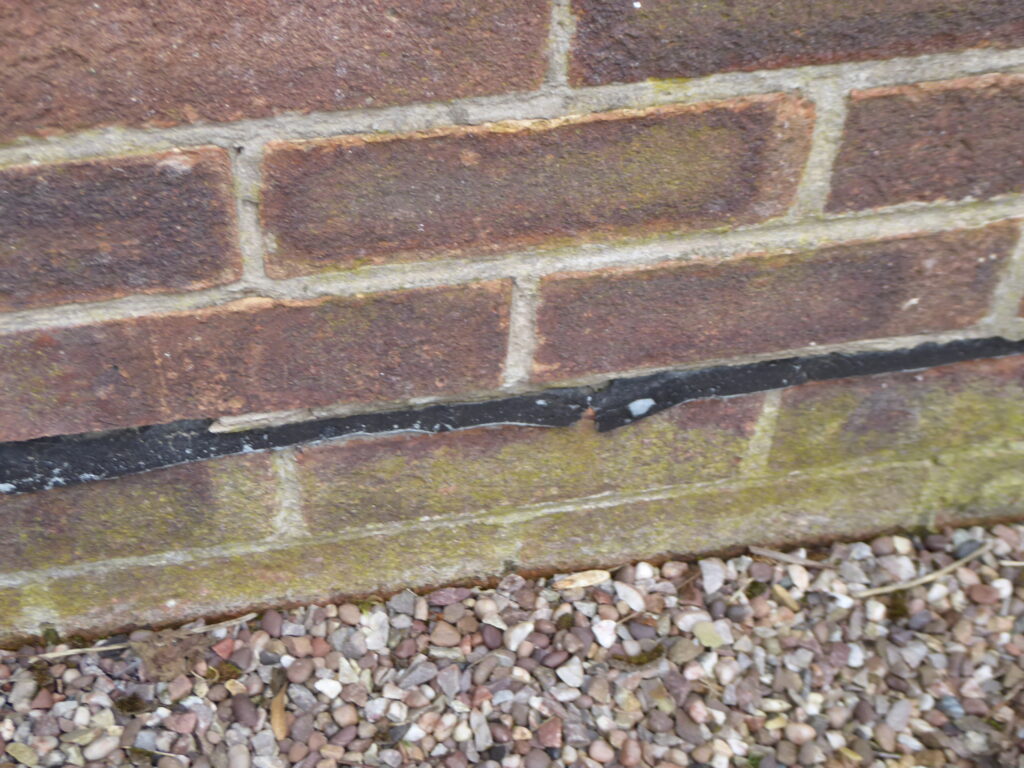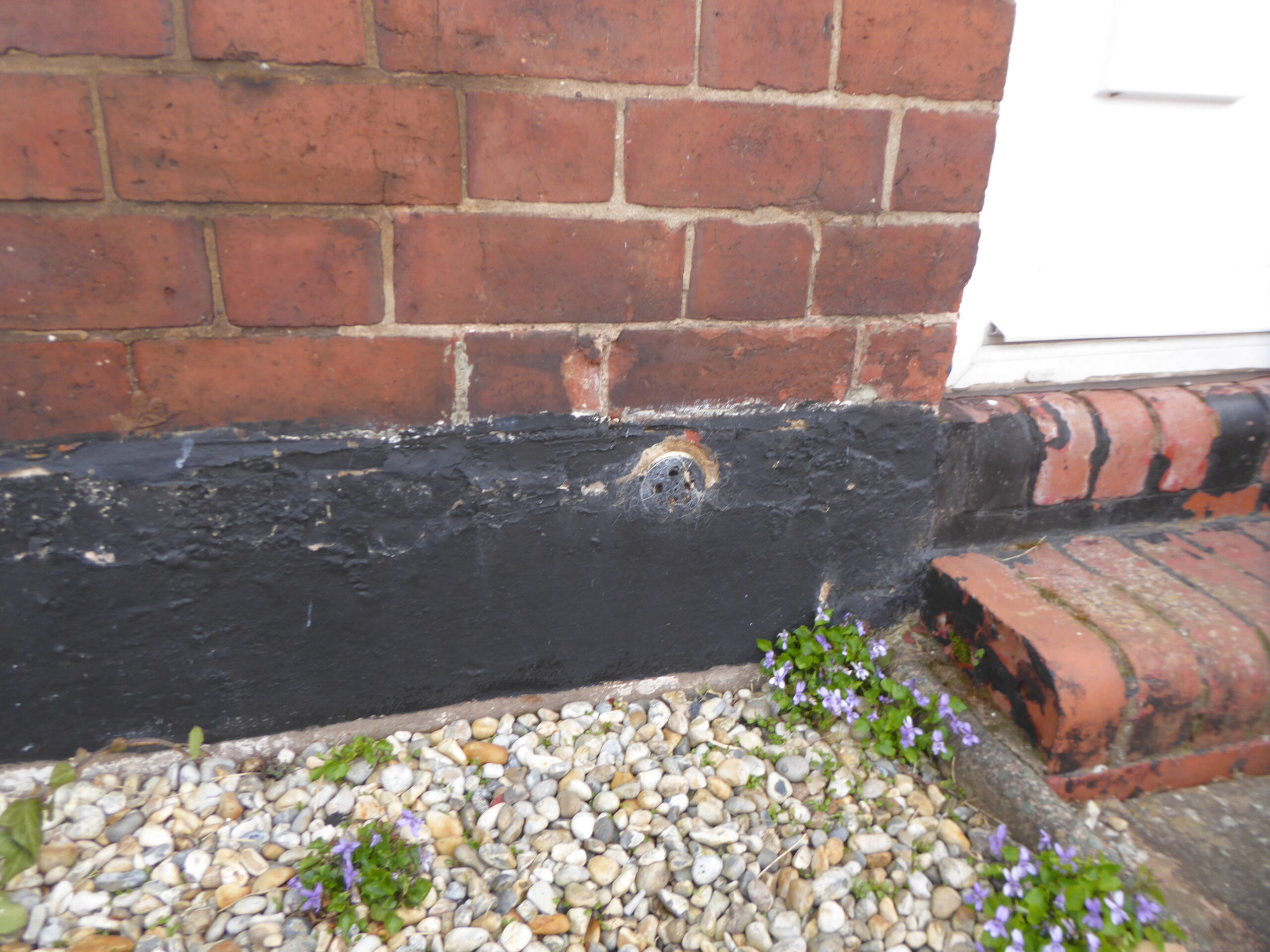First of all, what is a damp proof course? Quite simply it is something inserted into the base of the walls of a property. It is there to stop water in the ground from soaking up through the bricks and into the main fabric of the house, where it then causes rising damp. Damp proof courses (DPC’s) come in a wide variety of types. The best of these types is the type you see in most modern houses, a physical material layer in the wall.
Physical Damp Proof Courses

This method of DPC works by creating a physical barrier between the lower courses of brick and the main structure of the house. The material used varies from property to property depending on the date it was built. The earliest material used was slate, with this method builders would layer slate and mortar in the wall at a low level to stop the water. More modern methods use plastic and bitumen.
Physical DPC’s are the only method which has been proven to work against rising damp. However it can be difficult to fit a physical damp proof course if the property was not built with one. To retro fit this kind of DPC you would have to scrape out the current mortar and potentially some brickwork, this can be costly. For this reason people have used other methods of retro fitting damp proof courses as we will investigate below.
Evaporative Damp proof courses
This method of damp proofing was first seen in the 1930’s. This method of damp proofing is sometimes referred to as the Doulton Wallguard. Small ceramic tubes are inserted into the wall at low levels, at a slight angle. According to the manufactures the water is sucked out of the walls, into the tubes. Once in the tubes the water evaporates out easily into the outside air. There is little evidence to suggest that this will stop rising damp, however in some cases it may reduce the symptoms slightly.
This kind of damp proof course is only suitable for external walls. This is because the water needs to vent externally to allow evaporation. Doulton Wallguard damp proof courses are not as common nowadays as chemical injected methods came around.

Chemical Damp Proof Courses

There are two main types of Chemical DPC’s. One is injected into the bricks, and the other into the mortar. The concept is similar in both types, the chemical injected fills the pores and helps to create a barrier to stop the damp from rising any further up the walls.
Unfortunately a large number of houses have these put in too high so they are above the floor level. This reduces how useful they are. Always ensure that a damp proof course is below the level of the floor so it is protecting the wooden floor joists from damp and rot.
Chemical damp proof courses can come with guarantees, so it is always worth making sure the rights of the guarantees pass on to you when you purchase a property.
Electric Damp Proof Course
This type is other wise known as an electro osmosis damp proof course. Holes are drilled into the walls and titanium anodes are inserted into the holes. These anodes are then all linked together by a titanium wire around the property. You then run a very small electrical current then runs through the wires. According to the manufacturers the electric current reverses the direction of the water traveling up the wall through capillary action, and the water runs back into the ground.
This all sounds good, you can just plug a devise into your wall. However the effectiveness of an this method is widely debated and few people find that they actually work.

Check out all the types of damp proof course!
Tweet